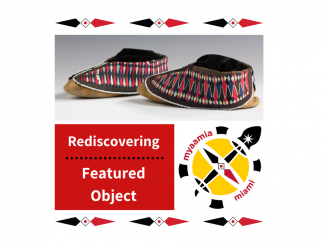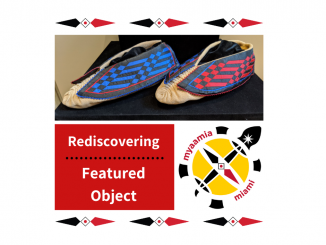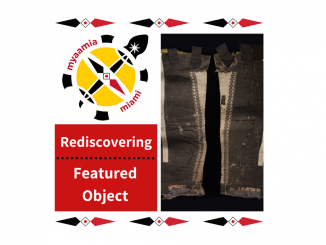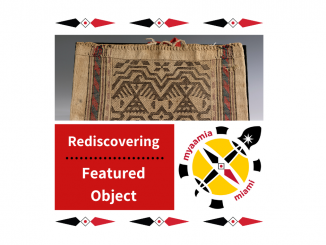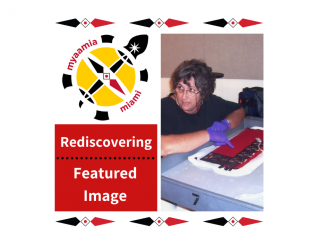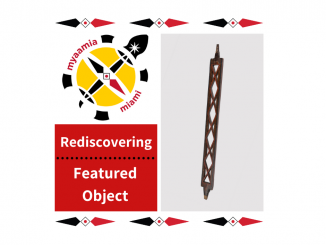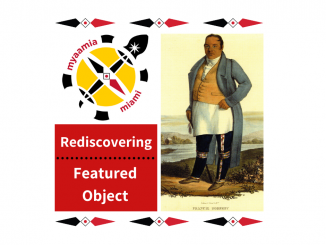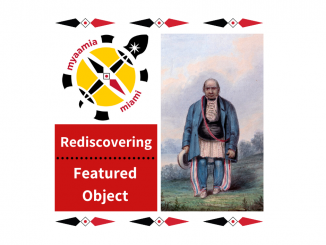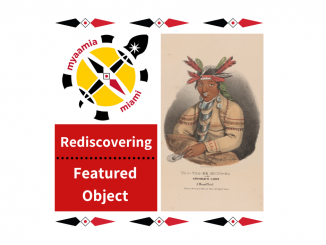taaniši aapooši meehkamaanki peepankišaapiikahkia eehkwaatamenki?
How was ribbonwork rediscovered?
Forced removals, land loss, and dislocation produced a profound degree of cultural loss that included the silencing of our language and a cessation of many cultural practices. As our community revitalized Myaamiaataweenki ‘the Miami language’ in the 1990s, several community members became interested in revitalizing cultural arts practices like Myaamia ribbonwork. We began this effort when the Miami Tribe of Oklahoma secured several small grants that allowed tribal representatives to see and photograph a large number of ribbonwork items. By going into archives and looking at historic pieces, community members recognized patterns, techniques and colors specific to Myaamia ribbonwork. A large grant from the National Endowment for the Arts allowed us to share the newly gained knowledge and the opportunity to teach over 200 community members how to create ribbonwork.
The process of revitalization taught us that the aesthetics of Myaamia ribbonwork had strong threads of continuity with other pre-contact art forms. The same geometric patterns appear in other Myaamia artforms like leather appliqué, painting, weaving, carving and tattooing. We have continued this adaptation of the Myaamia aesthetic today in geometric designs featured on screen printed t-shirts, tribal license plates, wall hangings, and many Myaamia publications.


